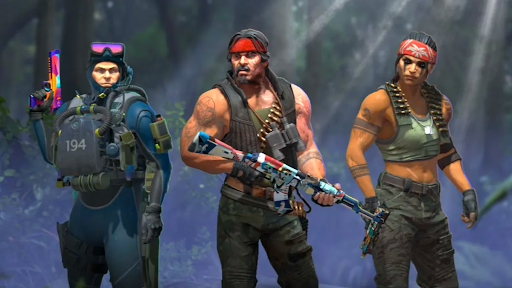Capturing Moments
Your go-to blog for photography tips and inspiration.
Anchor Yourself: Navigating the CS2 Anchor Role Like a Pro
Master the CS2 Anchor role with expert tips and strategies! Discover how to elevate your gameplay and dominate the competition.
Mastering the CS2 Anchor Role: Essential Skills and Strategies
Mastering the CS2 Anchor Role requires a combination of strategic positioning and game sense. An anchor player is crucial for maintaining map control and should be adept at holding specific sites against enemy advances. Key skills include crosshair placement, which allows for quicker reaction times when opponents emerge, and map awareness to anticipate enemy movements. It's essential to utilize utility effectively, such as smokes and flashes, to hinder enemy pushes or create opportunities for your teammates. Additionally, communicating with your team about enemy positions and potential threats can make a significant difference in maintaining control.
To truly excel in the Anchor Role, consider implementing the following strategies:
- Consistent Practice: Regularly hone your skills in aim training and situational awareness.
- Study Professional Gameplay: Watch replays of professional players to understand positioning and decision-making.
- Role Adaptation: Be prepared to shift your tactics based on the enemy’s strategy; flexibility can often catch opponents off guard.

Counter-Strike is a popular first-person shooter game that emphasizes teamwork and strategy. Players can choose different weapons and tactics, and one of the fan-favorite weapons is the AWP, especially the awp printstream, known for its high damage and one-shot kill capability. The competitive scene is vibrant, with numerous tournaments held globally, making it a staple in the esports community.
Top 5 Common Mistakes to Avoid as a CS2 Anchor
As a Counter-Strike 2 (CS2) anchor, your role is pivotal in team strategy and map control. However, many players fall into common traps that hinder their effectiveness. First, one of the biggest mistakes is neglecting map awareness. Always have a mental note of enemy positions and potential flanking routes. If you're too focused on your immediate area, you might miss critical information that could secure a win for your team.
Another frequent error is inconsistent positioning. An anchor must adapt to both the game dynamics and their team's strategy. Third, overcommitting to a single spot can make you predictable. Instead, consider rotating or changing your position between rounds to keep the enemy guessing. By avoiding these mistakes, you'll enhance not only your gameplay but also your team's overall performance.
How to Analyze Maps Effectively as a CS2 Anchor: Tips and Tricks
Analyzing maps in CS2 is essential for developing effective strategies and improving your gameplay. To start, focus on familiarizing yourself with the map's layout. Pay attention to key areas such as choke points, bomb sites, and high ground positions. Consider using tools like map overlays or screenshots to highlight specific zones and navigate them better. Take notes and create a mental checklist of common player movements to stay one step ahead of your opponents.
Next, when reviewing gameplay footage, look for patterns in how teams approach different maps. Identify strategies that worked well and those that didn’t. Create an ordered list of strengths and weaknesses you observe. For instance, jot down points like:
- Effective rotation strategies
- Common hiding spots
- Areas of high traffic
By analyzing these elements, you can better adapt your tactics in CS2 and enhance your team’s overall performance.